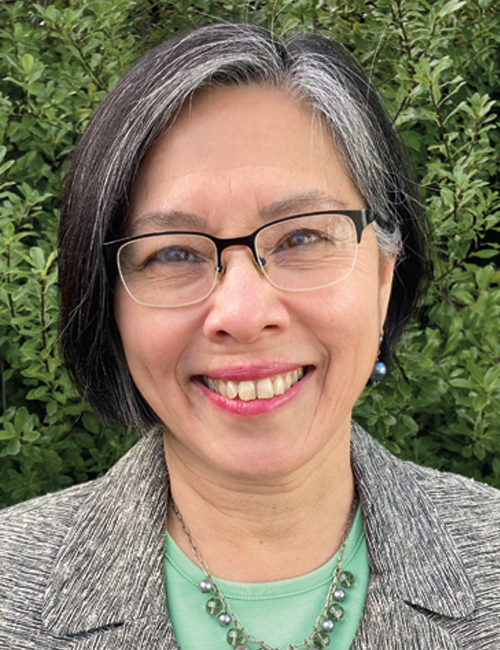


Boardwise is a forum for board members and superintendents across the state to share questions about governance and board–superintendent relations. Send your questions to boardwise@csba.org.
Sepideh: “Knowing yourself is the beginning of all wisdom.” – Aristotle
Connecting on a personal level is key in strengthening engagement at the board level. You may be asking how to connect on a personal level while being mindful of the Brown Act? The solution is simple, do not discuss district/board business. The main goal of connecting on a personal level is to get to know your colleagues. However, before you can connect with your fellow trustees (and as the quote by Aristotle reminds us), you need to get to know yourself on a deeper level and identify the following:
- Your personal why. Why did you run for the board or why did you choose to accept the appointment? Identification of your personal why will remind you of your purpose for serving on your board.
- Your top three values/beliefs. Recognizing your top core values will prevent you from derailing and will bring your focus back to student success and achievement.
- Your biases. How do your biases impact the lens you through which you view the world?
Through self-knowledge and awareness, you can begin to connect with your colleagues on the board. One way is to schedule one-on-one tea/coffee time or find out what activities you share and spend time doing those together. The three areas mentioned above could be discussed with your colleagues. You can also talk with fellow trustees and plan facilitated board workshops/retreats to connect personally. Such workshops create a safe environment for healthy dialogue, establishing trust among your team members.
Research by Linda Darling-Hammond, president and CEO of the Learning Policy Institute and president of the State Board of Education, shows that such connectedness increases release of the oxytocin hormone, which regulates emotional responses including trust, positive communication and empathy. Positive emotional responses, in turn, encourage engagement and contribute to a healthy, collaborative board culture.

Monika: Our communities deserve to have fully engaged board members. Even one disengaged team member can lead a a local educational agency into choppy waters. When that undercurrent pulls focus away from the core mission, less-than-effective governance results.
CSBA trainings stress authentic engagement where everyone participates. Identifying disengagement by fellow board members is crucial. Some obvious signs include absenteeism at meetings; lack of preparation, such as not reading agendas or board materials prior to meetings; or a distinctly lower level of participation as compared to other trustees. Another sign is when a board member stops attending district-related events, such as sports or other student-celebrating activities. Signs of “pulling away” are particularly worrisome when observed in veteran board members.
Board leadership should work to anticipate and help avoid whatever vulnerabilities might lead to disengagement. Are board members supportive of major staff changes? Do they conceal their disappointment or disdain? These could be clues to disengagement and red flags worthy of attention.
Matching veteran board members’ skills and interests with local educational agency initiatives is key. Not feeling noticed, needed or appreciated can be devastating to veteran board members. (Of course, these same vulnerabilities can apply to all board members.)
In an effort to re-engage a fellow board member, teams must model the good governance practice of acting collectively and speaking with a unified voice. Students are better served when team members show they have transitioned from “me” to “we” — clearly understanding the expectations of a truly engaged LEA board member. Showing recognition and gratitude for commitment to this premise can often be just what is needed to bring a disengaged board member back to peak relational connection. Students, staff and school leaders deserve nothing less from their governance team members.
Rosemary: I am reminded of the excitement and energy I felt when I joined the Santa Clara County Office of Education board. I was intent on learning as much as possible about education policy, programs and services, and school budgets. I wanted to engage quickly. I came in with new ideas, brought diverse experiences, was ready to move forward to help our students and to roll up my sleeves.
I soon learned that everyone has different levels of enthusiasm and at times there are limitations. I also needed to step back and take a pause to understand that I could not just move forward as an individual board member. Understanding the governance structure of the team — the superintendent and the entire board — was imperative. The shift from a campaign of “me” to “we” had to occur. Involving board members as an entire body is critically important.
Equally important is having a shared vision and understanding the roles and responsibilities of the board and the superintendent.
There is much to be absorbed as a new board member. Your fellow veteran trustees are key to sharing an understanding of the history of the LEA and should be seen as a valuable resource. Board member training internally at the district/COE level and externally through CSBA plays an important role.
Effective boards work together to set goals and monitor progress; use data to inform decision making; work collaboratively; are very knowledgeable about their LEA; and are accountable and engaged with the communities they serve. There are various opportunities to participate at the local, regional and state levels. Being engaged and staying engaged is critical to becoming a successful school board member. Joining a CSBA committee, participating in CSBA’s Legislative Action Week or serving on local school committees are some examples.
Trying to maintain the same energy throughout many years of service may not always be easy given the enormous challenges that our LEAs, schools, teachers, students and families face. We must constantly remember our original reasons for joining the school board, namely to ensure the success of our students.